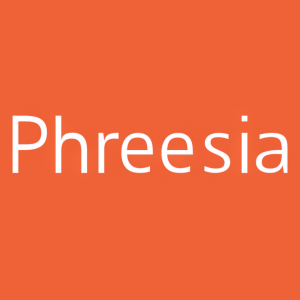Phreesia Secures New Contract With CMS as Report Shows Gains in Patient Activation in First Year of Kidney Care Choices (KCC) Model
ALL-REMOTE COMPANY/
Since 2019, Phreesia has partnered with CMMI to support the KCC Model, which aims to improve care and quality of life for nearly 200,000 Medicare beneficiaries with chronic kidney disease (CKD). The model is designed to delay the onset of dialysis and improve dialysis starts, increase home dialysis and incentivize kidney transplantation. On September 18, CMS released the first annual evaluation of the KCC model from 2022, the first year of the program, which found:
-
Clinically meaningful increases in PAM scores—an average of 8.8 points—across patient populations, with the highest increase—12.8 points—among transplant patients. In previous studies, changes of this magnitude have been associated with an
8% reduction in costs. - PAM score increases in the KCC program, in which organizations were incentivized, were double the average 4- to 5-point increase in prior studies of interventions with kidney care patients, in which clinicians were not incentivized.
-
Significant improvements in other targeted outcomes, including a
20% increase in home dialysis, an 8 to26% increase in peritoneal dialysis, a16% increase in optimal ESRD starts and an increase of15% of patients on the transplant waitlist. -
85% of large KCC-participating healthcare organizations successfully implemented interventions to address the needs of less-activated patients; most of those organizations had not used PAM previously. Survey responses such as “I know what treatments are available for my health problems” made it easier for care teams to understand patients’ needs. - Gains in activation were seen across all patient populations, including those who were older, sicker, economically disadvantaged, or racial or ethnic minorities—a key finding for helping to reduce pervasive disparities in the kidney-care population.
“We’re honored to continue partnering with CMMI and KCC participants, and we congratulate them on their success improving the lives of kidney care patients,” said Hilary Hatch, PhD, a clinical psychologist and Phreesia’s Chief Clinical Officer. “Care teams drove significant increases in PAM scores in the first year of the KCC program, meaning tens of thousands of kidney care patients are taking a more active role in their care. As CMMI expands the use of PRO-PMs to capture the patient voice, we look forward to working closely with them on new models, and we’re excited PAM will be available for more conditions and care settings.”
The PAM is backed up by over 800 peer-reviewed studies and is predictive of health behaviors that are linked to improvements in a patient’s health. When patient activation increases, clinical and mental health outcomes, medication adherence, disease self-management, and treatment satisfaction improve across numerous patient populations and chronic diseases. The PAM performance measure (PAM-PM) is the only performance measure endorsed by the Consensus Based Entity (CBE)—and re-endorsed in 2024—to assess gains in patient activation, based on the change in PAM survey scores over a twelve-month period.
“The year one KCC results are impressive,” said Alan Glaseroff, MD, Co-Founder and former Co-Director, Stanford Coordinated Care, at the Stanford School of Medicine. “The approach of incentivizing clinicians takes the focus on patient activation even further than we’ve seen before. The findings are similar to what we saw in our own CMMI-funded program, which ran from 2012 to 2015 and resulted in lower costs and improved outcomes. Patient activation is powerful, I’ve used it in my own practice, and I’m confident we’ll see continued improvements in outcomes—as well as cost reductions—in future years of the KCC Model.”
For more information on Phreesia, visit www.phreesia.com.
About Phreesia
Phreesia is the trusted leader in patient activation, giving providers, life sciences companies and other organizations tools to help patients take a more active role in their care. Founded in 2005, Phreesia enabled approximately 150 million patient visits in 2023—more than 1 in 10 visits across the U.S.—scale that we believe allows us to make meaningful impact. Offering patient-driven digital solutions for intake, outreach, education and more, Phreesia enhances the patient experience, drives efficiency and improves healthcare outcomes. To learn more, visit phreesia.com.
View source version on businesswire.com: https://www.businesswire.com/news/home/20241001712601/en/
Media:
Maureen McKinney
mmckinney@phreesia.com
773-330-8908
Source: Phreesia, Inc.







